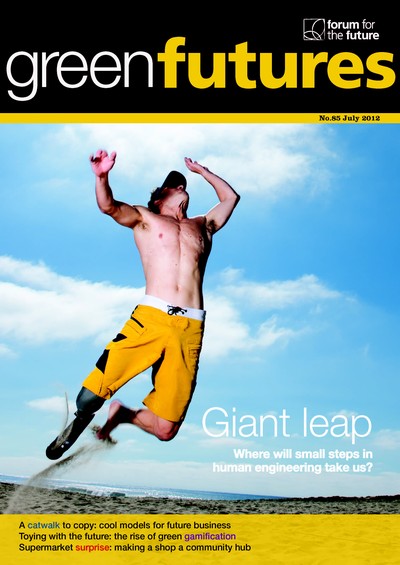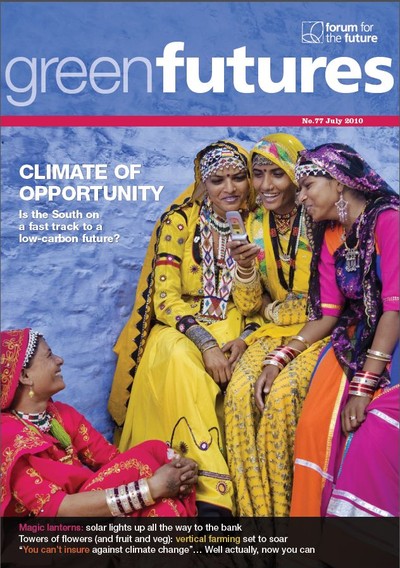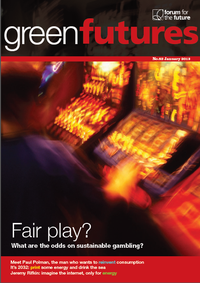Green Futures i — July 2010, #77

Green Futures
Green Futures is the leading magazine on environmental solutions and sustainable futures. Founded by Jonathon Porritt in 1996, it is published by Forum for the Future.
- 199 (51)
- United Kingdom
- Four issues a year
- First issue 1996
How often do you come across this phrase in a guidebook? “Out there, in the wilds of [insert exotic location here], you’re in a land where, to all intents and purposes, time has stood still.”
Sure, it’s the most dreadful cliché. But there are plenty of places in the world where, on the surface, it still applies.
Take the far south of Bangladesh, where the rivers widen into estuaries and the estuaries merge into the sea. Stand there at dusk, looking out over the water, and the 21st century seems light years away. Behind you, a clutch of thatched houses; in front, a few small fishing boats, like skiffs, trailing nets against the flow. There’s a moon rising over the distant shore…
Suddenly, an unmistakeable double beep shrills out across the water. The fisherman stirs, pulls a mobile out of his pocket and starts tapping a reply. Almost simultaneously, another phone rings, and there’s a voice from the bank behind you in earnest conversation. You can’t make out many of the words, but it’s clear he’s talking about money.
Then, from what seemed like a simple thatched house just around the corner, there’s an explosion of cheers and applause. Tamim Iqbal has just reached his 100. The house is a café, and half the men in the village are there, watching Bangladesh take on England at cricket.
Looking up to the roofline you spot a solar panel and a satellite dish. And over there, a phone mast sprouts between the trees. Three emblems of a quiet revolution: a surge of innovation which is sweeping through much of the global South, and overturning some hackneyed notions of ‘development’ as it does so.
In ‘Low Carbon, Fast Track?’ [p16], we ask whether this could, for once, be a case of third world first: the solar-rich South leapfrogging the rest towards a sustainable future. There’s no mistaking the speed and scale of change underway. Across Asia and Africa, old models of top-down development aid are being made redundant by fleet-footed entrepreneurs, finding ways to deliver low-carbon light, power and income opportunities to the rural poor – and at a profit, too [‘Magic Lantern’, p28; ‘Burning down the myths’, p30]. Technological innovation is combining with fresh thinking to throw up whole new business models. In ‘Climate Covered’ [p22], we explore the rise of micro-insurance – allowing the previously ‘uninsurable poor’ to cover their homes and harvests against the ravages of wild weather.
All of this comes at a time when confidence in the 20th century version of development – driven by fossil fuels, delivered by heavy industry and financed by towering levels of debt – is looking shakier than ever. So it’s timely, perhaps, that a network of designers in developing countries, tongues only partly in cheeks, have decided it’s time to send aid the other way [‘Can the Rest save the West?’, p21], and are dreaming up solutions to save the struggling first world from itself.
Many of these, perhaps, will be far-fetched – as are some of the more optimistic visions of an Africa transformed within a generation by solar power and mobile phones. But which of us would have predicted, back in the 80s, that some of the poorest Bangladeshi fishermen would soon be wielding a communications device of a range and sophistication way beyond anything we could lay our hands on?
What do you think of this issue?
Sign up or Log in to join the discussion.




